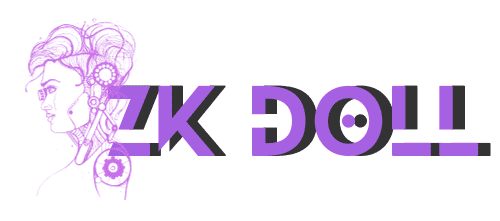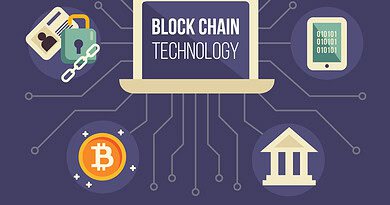Tokenomics – The Backbone of Cryptocurrencies: Everything You Need to Know
In the dynamic realm of cryptocurrencies, the term “tokenomics” serves as a cornerstone, shaping the fundamental structure of digital ecosystems. It’s more than just a buzzword; it’s the intricate system that defines the economics and functionalities of tokens within a blockchain network.
Defining Tokenomics
At its essence, tokenomics refers to the economic principles and mechanisms governing tokens within a blockchain ecosystem. It encompasses various aspects, including token distribution, utility, governance, and economics. These components collectively determine the value, utility, and behavior of tokens within a given network.
Significance of Tokenomics in the Cryptocurrency Space
Tokenomics is the bedrock upon which the functionality and viability of cryptocurrencies rest. Its significance can be observed through several key aspects:
Economic Model
Tokenomics designs the economic model of a cryptocurrency or token. It establishes the rules governing token creation, distribution, and circulation, which directly influence its value.
Utility and Functionality
Tokens serve diverse purposes within their respective ecosystems, from facilitating transactions to granting access to specific features or services. Tokenomics outlines how tokens are utilized, adding intrinsic value and utility to the digital asset.
Community Governance
Governance mechanisms embedded within tokenomics enable decentralized decision-making, allowing token holders to participate in network governance and steer the direction of the ecosystem.
Investor and Market Confidence
A well-defined tokenomics model instills confidence among investors and users by providing transparency regarding token supply, distribution, and future plans. This transparency contributes to market stability and fosters trust in the project.
Ecosystem Growth and Innovation
Effective tokenomics incentivizes network participants, encourages development, and fosters innovation within the ecosystem. This fuels the growth of the project and its community.
In essence, tokenomics is not just a theoretical construct; it’s the practical framework that determines the success and sustainability of a cryptocurrency project. Its impact ripples across the entire blockchain space, influencing investment decisions, technological advancements, and the evolution of decentralized systems.
Unveiling the Foundations of Tokenomics
In the subsequent sections of this comprehensive guide, we delve deeper into the intricate components of tokenomics, exploring the various facets that contribute to its complexity and importance in the ever-expanding landscape of cryptocurrencies.
Explaining Tokens and Their Role in Blockchain
Tokens represent a pivotal aspect of blockchain technology, serving as the lifeblood of decentralized ecosystems. These digital assets, often built atop existing blockchain platforms like Ethereum, are programmable units with distinct functionalities and purposes within a network. Unlike cryptocurrencies such as Bitcoin, which operate as a medium of exchange, tokens have a broader spectrum of uses.
Key Components of Tokenomics
Tokenomics comprises several interrelated components that collectively shape the token’s behavior, value, and utility within a blockchain ecosystem.
- Token Utility
Tokens derive value from their utility within a system. They can serve a myriad of purposes: enabling access to products or services, facilitating transactions, representing ownership or voting rights, and much more. The utility determines the demand for tokens within the ecosystem.
- Token Supply
The total supply of tokens available and their distribution significantly impacts their value and scarcity. Factors like fixed supply (as with Bitcoin) or inflationary models influence token economics.
- Token Distribution
The initial distribution methods of tokens are crucial. They may be distributed through ICOs (Initial Coin Offerings), airdrops, or other mechanisms. The distribution strategy can impact market perception and initial token value.
- Token Governance
Governance mechanisms dictate decision-making processes within decentralized networks. Governance tokens often grant holders voting rights or influence in proposing and implementing changes, thus shaping the future of the ecosystem.
- Token Economics
Economic models determine how tokens are created, circulated, and destroyed (if applicable). Models vary, from deflationary mechanisms like token burns to inflationary models with continuous token issuance.
Understanding these foundational elements is paramount in comprehending the dynamics of tokenomics. Each component intricately weaves into the fabric of a token’s existence, influencing its value, adoption, and sustainability within the blockchain ecosystem.
Tokenomics in Realms of Practicality
In the subsequent sections, we’ll delve deeper into the practical applications of these components, exploring how they interact and mold the intricate landscape of tokenomics. Understanding these elements will provide a holistic view of how tokens function within decentralized networks and the broader implications they hold within the cryptocurrency space.
Types of Tokens
- Utility Tokens
These tokens hold intrinsic value within a specific ecosystem, granting access to services, products, or functionalities. Their primary purpose is utility within a network.
Examples: Ethereum (ETH); Cronos (CRO); Chainlink (LINK); Polygon (MATIC); The Sandbox (SAND)
- Security Tokens
Representing ownership or assets, security tokens adhere to regulatory frameworks and often mimic traditional financial instruments. They may provide dividends, profit shares, or voting rights.
- Governance Tokens
Empowering holders with decision-making abilities within decentralized systems, governance tokens enable voting on proposals or changes within a protocol.
Examples: MakerDao (MKR), Curve (CRV), Arbitrum (ARB)
- Stablecoin
Engineered to mitigate price volatility, stablecoins are pegged to external assets like fiat currencies or commodities, ensuring a stable value.
Examples: USD Coin (USDC), Tether (USDT)
Token Issuance Models
- ICO (Initial Coin Offering)
Traditional fundraising method where tokens are sold to investors to raise capital for a project. Investors receive tokens at an early stage, potentially at a lower price, hoping for future value appreciation.
- STO (Security Token Offering)
Compliant with securities regulations, STOs issue tokens representing ownership in an asset or company. They offer investors legal rights and are subject to regulatory oversight.
- IEO (Initial Exchange Offering)
Conducted on cryptocurrency exchanges, IEOs involve token sales facilitated by an exchange, providing a level of trust and security to investors.
- IDOs (Initial DEX Offerings)
Occur on decentralized exchanges (DEXs), granting broader access to token sales without relying on centralized intermediaries.
- Airdrops
Free distribution of tokens to existing holders or the broader community, often as a marketing strategy to increase adoption or incentivize participation.
Token Distribution Methods
- Vesting Schedules
Mechanism that staggers token release to recipients over a predetermined period, ensuring commitment and discouraging immediate sell-offs.
- Token Burns
Purposeful destruction of tokens, reducing the total supply to potentially increase the value of remaining tokens.
- Staking and Rewards
Involves holding tokens in a wallet to support the network’s operations and receiving rewards or interest in return, promoting network security and participation.
Understanding these diverse token types, issuance models, and distribution methods is crucial for investors, developers, and users navigating the complex terrain of tokenomics. The choice of token type, issuance method, and distribution strategy profoundly influences a project’s success, investor confidence, and the overall functionality of the token within its ecosystem.
The Nexus of Tokenomics and Economics
Token Valuation
- Supply and Demand Dynamics
The interplay between token supply (availability) and demand heavily influences token prices. Increased demand against limited supply tends to drive prices higher.
- Market Cap and Circulating Supply
Market capitalization, calculated by multiplying the circulating supply of tokens by their current price, gives a rough estimate of a project’s valuation in the market.
- Token Burn and Scarcity
Token burns, reducing the total supply, create scarcity, potentially leading to increased token value by amplifying scarcity against demand.
Inflationary vs. Deflationary Models
- Inflationary Models
These models involve the continuous issuance of new tokens, potentially leading to reduced value per token over time due to increased supply.
- Deflationary Models
Contrarily, deflationary models include mechanisms like token burns or fixed supplies, aiming to decrease supply and potentially increase value over time.
Impact of Tokenomics on Price Volatility
Tokenomics significantly impacts price volatility. Factors such as token utility, economic models, and market perceptions influence the stability or volatility of a token’s price. Well-designed tokenomics, focusing on utility and scarcity, can potentially mitigate volatility.
Token Utility and Long-Term Value
A token’s utility, its actual usefulness and functionality within an ecosystem, plays a pivotal role in determining its long-term value. Tokens with real, sustainable utility tend to have more enduring value propositions, fostering longevity and demand within the market.
Tokenomics shapes the economic dynamics of cryptocurrencies, influencing their valuation, market behavior, and investor sentiment. Understanding these economic principles provides insights into the broader implications of tokenomics on the sustainability and growth potential of blockchain-based assets.
Governance and Community in Tokenomics
Decentralized Autonomous Organizations (DAOs)
Decentralized Autonomous Organizations (DAOs) represent a paradigm shift in governance structures, leveraging blockchain technology to create decentralized decision-making entities. DAOs operate through smart contracts and allow token holders to collectively govern a protocol or organization. Participants vote on proposals, changes, or allocation of resources, embodying a democratic approach to governance.
Role of Governance Tokens
Governance tokens empower holders with voting rights and influence within decentralized networks. They serve as a mechanism for stakeholders to participate in decision-making processes, ranging from protocol upgrades to resource allocation. Governance tokens align the interests of token holders with the success and development of the ecosystem.
Community Engagement and Decision-Making
Tokenomics intertwines with community engagement, fostering a sense of ownership and involvement among token holders. Community-driven initiatives, discussions, and voting mechanisms enable decentralized decision-making, shaping the future trajectory of projects. Active participation and engagement contribute to a vibrant and resilient ecosystem.
Tokenomics and Regulatory Considerations
Legal Implications of Token Offerings
Token offerings, depending on their nature and features, might fall under different regulatory categories. ICOs, STOs, and other token sales often encounter regulatory scrutiny due to potential securities laws violations. Understanding and complying with relevant regulations are crucial to avoid legal pitfalls.
Compliance and Regulatory Challenges
Navigating the regulatory landscape presents challenges for token projects. Compliance with various financial and securities laws, anti-money laundering (AML) regulations, and know-your-customer (KYC) requirements is essential. Balancing innovation with compliance remains a significant challenge for blockchain-based ventures.
Evolving Regulatory Landscape
The regulatory landscape surrounding cryptocurrencies and token offerings continues to evolve. Governments and regulatory bodies worldwide are actively shaping policies to accommodate digital assets. Emerging frameworks aim to strike a balance between fostering innovation and protecting investors, contributing to a clearer regulatory environment.
Tokenomics operates within a framework influenced by governance structures and regulatory landscapes. Empowering communities through governance tokens while navigating complex regulatory frameworks is integral to fostering sustainable growth and legitimacy within the cryptocurrency space.
Case Studies and Examples
Successful Tokenomic Models
Ethereum
Ethereum’s token, Ether (ETH), serves multiple functions within its ecosystem. It fuels transactions, executes smart contracts, and plays a pivotal role in governance. Its utility and the Ethereum network’s innovation positioned it as a cornerstone in decentralized applications (dApps) and DeFi (Decentralized Finance).
Uniswap
Uniswap’s UNI token plays a crucial role in the protocol’s governance and incentivizes liquidity provision. Uniswap’s automated market-making and decentralized exchange model, coupled with its tokenomics, contributed to its prominence in the DeFi space.
Lessons Learned from Token Launches
Token launches have provided valuable insights into effective strategies and pitfalls to avoid. Key lessons include the importance of:
- Clear utility and value proposition for tokens.
- Transparent token distribution methods to build trust.
- Sustainable governance models to engage and empower communities.
- Compliance with evolving regulatory requirements.
Notable Failures and Their Causes
Several token launches faced challenges and failures due to:
- Lack of clear utility or use case for tokens.
- Poorly executed token distribution strategies causing market distrust.
- Regulatory uncertainties leading to legal issues and investor concerns.
- Insufficient community engagement and governance structures.
Future Trends and Developments
Evolution of Tokenomics
Tokenomics continues to evolve, integrating new economic models and mechanisms. Concepts like tokenized assets, yield farming, and novel governance structures are shaping the next phase of tokenomics, emphasizing utility, sustainability, and inclusivity.
Interoperability of Tokens across Blockchains
The ability for tokens to move seamlessly across different blockchain networks, facilitated by interoperability solutions like bridges and cross-chain protocols, enhances the flexibility and utility of tokens. Interoperability fosters collaboration and expands the scope of decentralized ecosystems.
Role of Tokenomics in Web3 and Metaverse
Tokenomics serves as the backbone of Web3 and the emerging metaverse, providing the economic infrastructure for decentralized applications, virtual assets, and immersive experiences. Tokenomics plays a pivotal role in shaping the decentralized, interconnected, and tokenized future of the internet.
The amalgamation of successful case studies, lessons from failures, and ongoing trends in tokenomics underscores its dynamic nature. As it continues to evolve, tokenomics will drive innovation, reshape digital economies, and redefine interactions within the blockchain space, Web3, and the metaverse.
Conclusion
Tokenomics stands as the bedrock of the cryptocurrency and blockchain ecosystem, delineating the economic principles and functionalities of tokens within decentralized networks. Its pivotal components, encompassing utility, supply, governance, and economics, intricately mold the value and behavior of tokens.
Tokenomics fuels innovation, enabling diverse token types with unique functionalities like utility tokens, security tokens, governance tokens, and stablecoins. These tokens cater to specific needs within their ecosystems, fostering growth and utility.
The governance structures embedded in tokenomics, like DAOs and governance tokens, empower communities to shape the trajectory of projects, ensuring decentralized decision-making and alignment of interests.
Final Thoughts on the Future of Tokenomics
The future of tokenomics is promising yet dynamic. It will witness continual evolution, driven by advancements in technology, regulatory frameworks, and community demands.
As tokenomics advances, it will prioritize utility, sustainability, and interoperability. Projects that offer tangible value, robust governance, and regulatory compliance are likely to thrive. Tokenomics will underpin the transition towards Web3 and the metaverse, revolutionizing how value is exchanged, governed, and experienced online.
However, challenges persist, especially in navigating regulatory landscapes and mitigating risks associated with token launches. Finding the delicate balance between innovation and compliance will be crucial in fostering mainstream adoption and investor confidence.
In essence, tokenomics will remain the linchpin of decentralized ecosystems, guiding the future of digital economies and redefining the landscape of finance, governance, and interactions in the digital realm. Its continued evolution and maturation promise a future where tokens play an integral role in shaping the world’s economic infrastructure.




